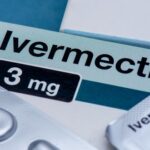Oral Minoxidil Sales Soars About 3 Fold After New York Times Article

A recently conducted study delves into the impact of a 2022 New York Times article that shed light on the efficacy of low-dose oral minoxidil (LDOM) for treating hair loss. According to the study published in JAMA Network Open, prescriptions for LDOM experienced a significant surge in the weeks following the article’s publication. The authors, hailing from Harvard Medical School, Massachusetts General Hospital, and Truveta, a provider of electronic health record data, found that the weekly rate of first-time LDOM prescriptions per 10,000 outpatient encounters rose from 0.5 prescriptions to 0.9 prescriptions in the eight weeks following the article.
Interestingly, the study also revealed that there was no corresponding increase in first-time prescriptions for finasteride or hypertension medications during the same period. The New York Times article aimed to educate patients and physicians about LDOM, emphasizing that although it lacked new research findings or large-scale randomized evidence, the drug was both affordable and safe while exhibiting remarkable effectiveness for many individuals. However, it should be noted that LDOM has not been approved by the Food and Drug Administration specifically for hair loss treatment.
Dr. Rodney Sinclair, a dermatology professor at the University of Melbourne who conducted the original research on LDOM and hair loss, was quoted in the Times article. He explained that the surge in prescriptions following the publication was not an abrupt occurrence but rather a continuation of the gradual increase observed over time. Dr. Sinclair highlighted the growing momentum for minoxidil prescriptions, which has even led to a global shortage of LDOM. Nonetheless, the drug remains widely available in the United States, with no shortage listed by the American Society of Health-System Pharmacists.
Dr. Sinclair further elaborated on the increasing support for minoxidil use since he initially presented the research findings approximately six years ago. According to a 2022 survey conducted by the International Society of Hair Restoration Surgery, 26% of treating physicians reported frequently or always prescribing off-label oral minoxidil, marking a significant rise from 10% in 2019 and 0% in 2017. An additional 20% of physicians stated that they prescribed it occasionally.
To conduct their study, the researchers examined prescription data from eight healthcare systems both before and after the Times article’s publication. They specifically analyzed the rate of first-time oral minoxidil prescriptions for 2.5 mg and 5 mg tablets, excluding the 10 mg tablets used for hypertension treatment. The analysis revealed that within the seven months before the article, 2,846 patients received first-time prescriptions, whereas this number increased to 3,695 patients in the five months following publication. Additionally, there was a higher proportion of men (43.6% after vs. 37.7% before) and White individuals (68.6% after vs. 60.8% before) among those receiving prescriptions after the article’s release. The study also observed a 2.4-fold increase in first-time prescriptions among men and a 1.7-fold increase among women. Moreover, individuals with comorbidities accounted for a smaller proportion of prescriptions after the article was published.
The authors of the study speculate that various socioeconomic factors, such as access to healthcare, educational background, and income levels, may have influenced individuals to seek low-dose oral minoxidil after reading the New York Times article. These factors could play a role in shaping patient preferences and healthcare-seeking behavior.





